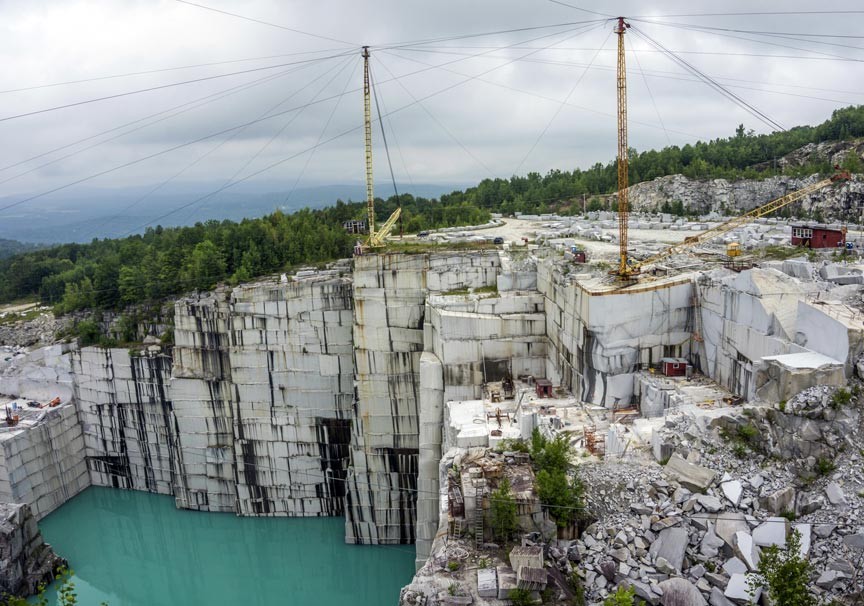Unveiling the Mysteries of Granite Quarrying: Where Stamina and Style Meet
The world of granite quarrying is a world where the raw stamina of nature converges with human virtuosity to produce structures that stand the test of time with an air of elegance. From the midsts of quarries to the precise sprucing up in workshops, the process of transforming granite right into architectural marvels is a complicated dance of custom and innovation. As we peer right into the depths of this old craft, we begin to reveal the surprise intricacies that form the really essence of our developed environment.
The Beginnings of Granite Quarrying
In the annals of architectural history, the origins of granite quarrying are shrouded in a tapestry of ancient craftsmanship and geological marvels. Dating back to ancient Egypt and Mesopotamia, the extraction of granite from quarries noted the beginning of a journey that would eventually lead to the production of some of the globe's most legendary structures.
Granite quarrying's origins can be traced to the competent craftsmens that identified the rock's resilience and aesthetic charm. Via a mix of primitive devices and sheer resolution, these early quarry workers uncovered granite blocks that would end up being the structure blocks of civilizations.
As human beings evolved, so did the methods of quarrying granite. The Romans, renowned for their design expertise, developed advanced approaches for removing granite to create monuments, temples, and roads that stood the examination of time.
The legacy of these old quarrying practices continues to form modern-day architecture, with granite continuing to be a sign of strength and elegance in building tasks around the world. (granite quarries in south africa)
Tools of the Quarrying Profession
The development of granite quarrying strategies from old human beings to contemporary times highlights the essential duty played by the devices of the quarrying sell shaping the market's techniques. In old times, quarrying tools were fundamental, typically containing knives, hammers, and wedges made from products like bronze or iron. These devices called for considerable manpower and time to remove granite obstructs from quarries.

Additionally, the introduction of pneumatic devices and high-powered equipment has actually dramatically decreased the physical labor needed in quarrying procedures, boosting employee safety and efficiency. As the quarrying sector remains to innovate, the devices of the profession remain at the leading edge of driving development and shaping the future of granite extraction.
Removing Blocks of Granite
Making use of accuracy machinery and advanced techniques, the removal of granite obstructs from quarries has ended up being an advanced procedure in the modern quarrying industry. Controlled blasting methods are after that used to damage apart the granite into manageable areas.

Sprucing Up and Ending Up Strategies
To attain a remarkable surface on granite blocks, knowledgeable craftsmens use a series of meticulous polishing and finishing methods. After the preliminary extraction and forming processes, the granite blocks go through a complete sprucing up phase to enhance their natural appeal and toughness.
Along with sprucing up, completing strategies are applied to additional refine the granite's look. These techniques might include flaming, honing, or cleaning, each offering unique appearances and surfaces to match different aesthetic choices. Flaming, for instance, involves Home Page exposing the granite surface area to heats to develop a harsh, textured surface, perfect for outside applications where slip-resistance is necessary. Sharpening, on the various other hand, gives a matte surface that is smooth to the touch, excellent for interior kitchen counters and floor covering. By thoroughly choosing and using these brightening and ending up methods, craftsmens can change raw granite obstructs right into exquisite pieces that showcase both toughness and sophistication.

Environmental Effect and Sustainability
With the growing emphasis on environmental consciousness in the industry, granite quarrying practices are significantly scrutinized for their effect on all-natural resources and long-lasting sustainability. Quarrying for granite can have substantial ecological effects. The extraction procedure commonly includes making use of heavy equipment, explosives, and huge quantities of water, causing environment damage, soil erosion, and water air pollution. Additionally, the transportation of granite from quarries to refining centers produces carbon discharges, Get More Information better contributing to ecological degradation. granite quarries in south africa.
To reduce these effects and make sure sustainability in granite quarrying, market stakeholders are taking on numerous measures. Implementing innovative innovations to reduce energy intake and water usage, redeeming quarried land for environmental remediation, and advertising responsible sourcing practices are some techniques being employed. Additionally, accreditations such as the Woodland Stewardship Council (FSC) and the Leadership in Power and Environmental Style (LEED) aid customers identify eco-friendly granite items.
Conclusion
In verdict, granite quarrying is a process that calls for specialized devices and strategies to essence blocks of granite and polish them to a high level of coating. While the ecological effect of quarrying can be substantial, efforts are being made to boost sustainability practices in the industry. On the whole, granite quarrying is a fragile balance in between harnessing the toughness and elegance of this all-natural rock while decreasing its influence on the atmosphere.
Comments on “Diving right into of Granite Quarries in South Africa”